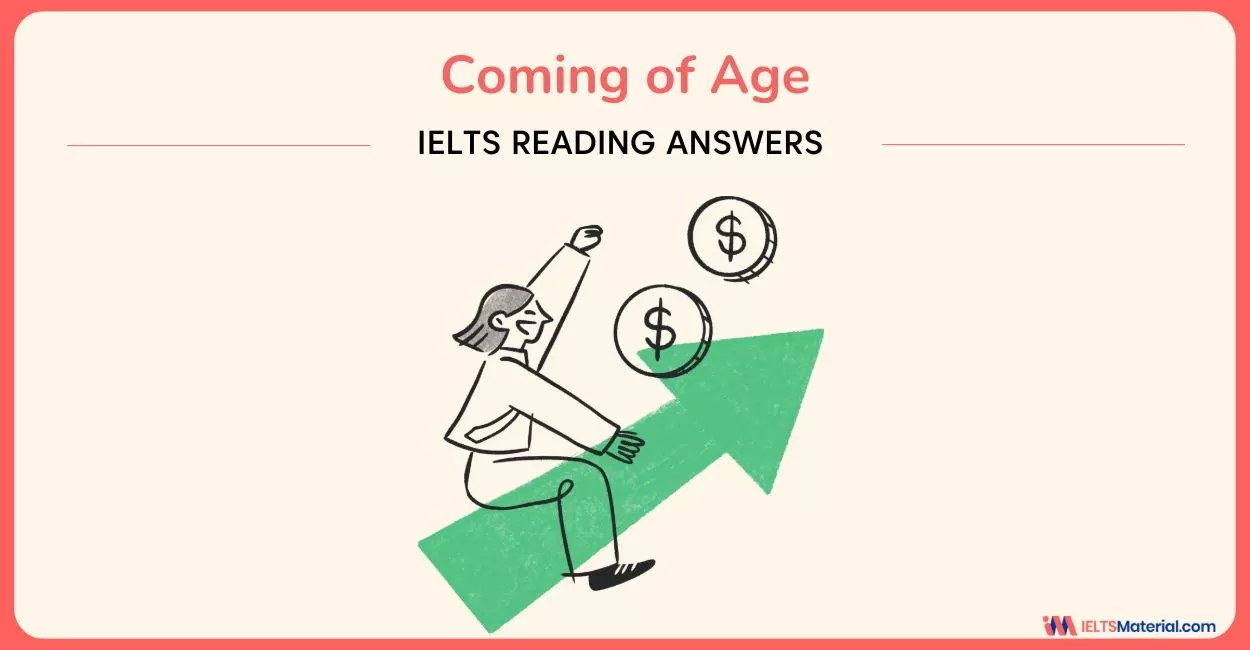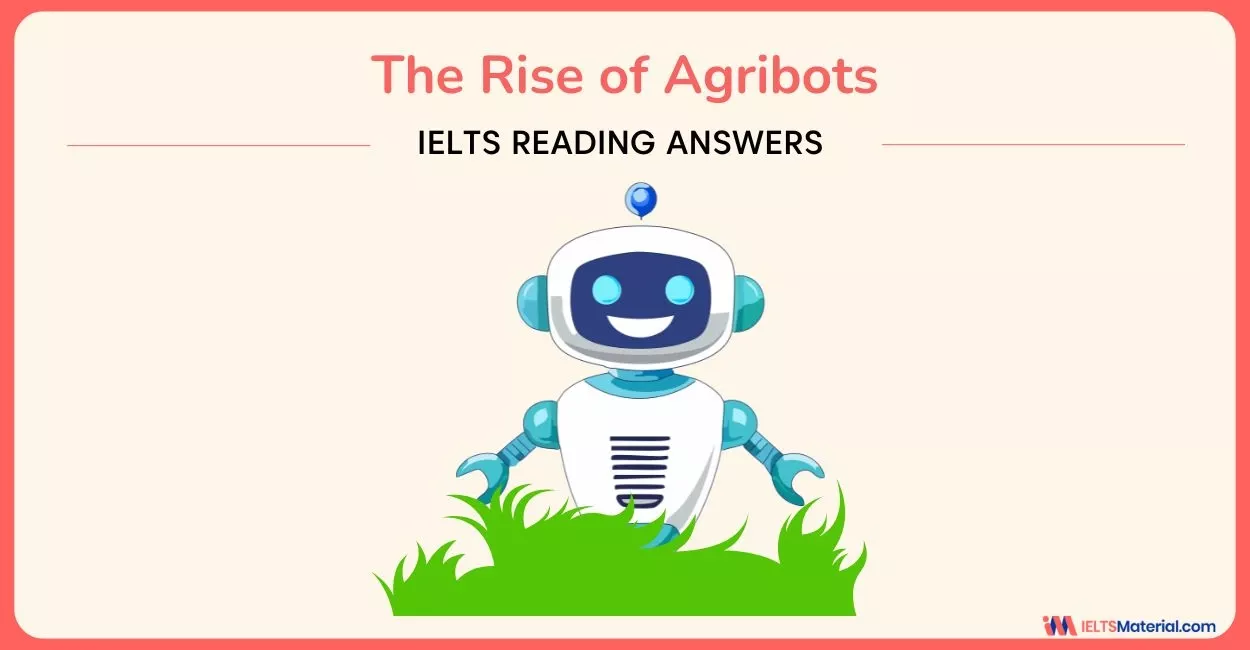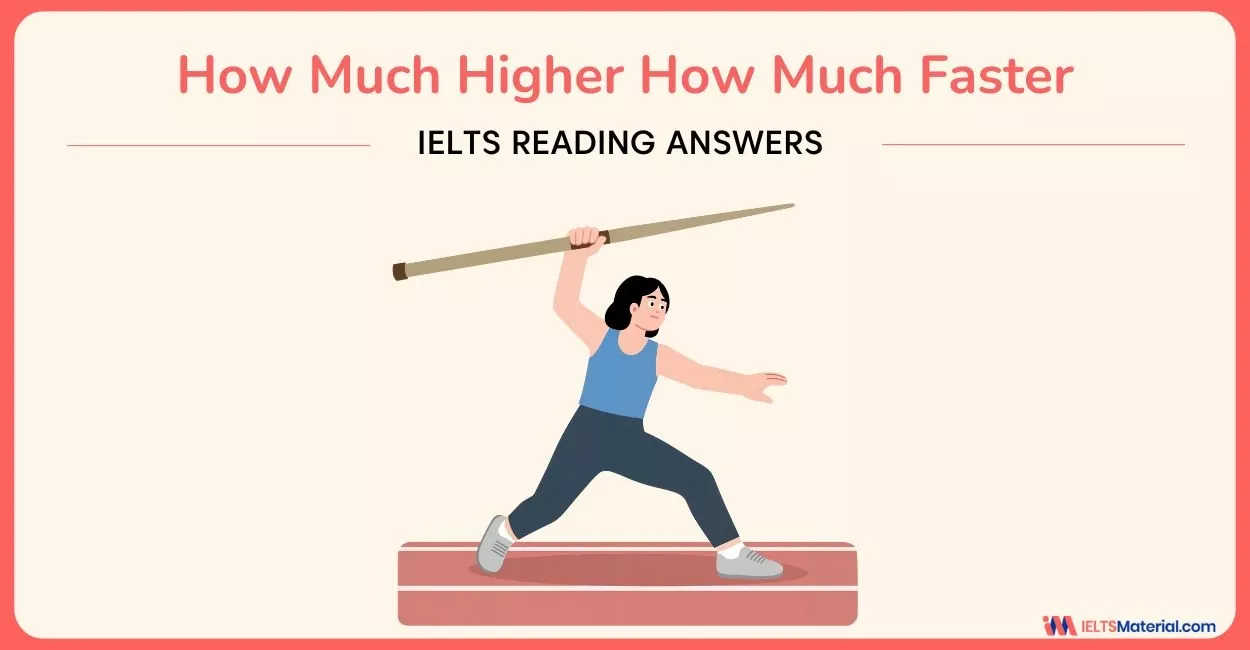How Much Higher How Much Faster - IELTS Reading Answers
15 min read
Updated On
-
Copy link
Boost your IELTS reading band score to 8 and above by using the ‘How Much Higher How Much Faster’ IELTS reading passage and its answer key. Also, learn to deal with different IELTS reading questions with the tips here and refine your reading strategy.
Table of Contents
- Passage for How Much Higher How Much Faster IELTS Reading Answers
- Questions for How Much Higher How Much Faster Reading Answers
- Answers and Explanations of How Much Higher How Much Faster IELTS Reading Passage
- Tips for Answering the Question Types in the How Much Higher How Much Faster Reading Passage

Limited-Time Offer : Access a FREE 10-Day IELTS Study Plan!
Working with full tests can feel mentally exhausting, but single passages like ‘How Much Higher How Much Faster IELTS Reading Answers’ from IELTS Cambridge 4 Test 4 reduce stress and help you focus better. With one passage at a time, you can slow down, understand the text thoroughly, and learn to notice patterns. This approach trains your brain without overwhelming it, making your study routine more sustainable.
Take the passage, ‘How Much Higher How Much Faster’ below, and try more IELTS Reading practice tests. We have provided explanations, locations for the answers, and tips to help you handle the three different types of reading questions here.
Passage for How Much Higher How Much Faster IELTS Reading Answers
Now go through the passage for ‘How Much Higher How Much Faster’ Reading Answers given below, and be prepared to solve similar IELTS Reading topics for General and Academic for the reading section.
You should spend about 20 minutes on Questions 1-13, which are based on the Reading Passage below.
How Much Higher How Much Faster
Limits to human sporting performance are not yet in sight
Since the early years of the twentieth century, when the International Athletic Federation began keeping records, there has been a steady improvement in how fast athletes run, how high they jump and how far they are able to hurl massive objects, themselves included, through space. For the so-called power events –that require a relatively brief, explosive release of energy, like the 100-metre sprint and the long jump-times and distances have improved ten to twenty percent. In the endurance events the results have been more dramatic. At the 1908 Olympics, John Hayes of the U.S. team ran to marathon in a time of 2:55:18. In 1999, Morocco’s Khalid Khannouchi set a new world record of 2:05:42, almost thirty percent faster.
No one theory can explain improvements in performance, but the most important factor has been genetics. ‘The athlete must choose his parents carefully,’ says Jesus Dapena, a sports scientist at Indiana University, invoking an oft-cited adage. Over the past century, the composition of the human gene pool has not changed appreciably, but with increasing global participation in athletics - and greater rewards to tempt athletes - it is more likely that individuals possessing the unique complement of genes for athletic performance can be identified early. ‘Was there someone like [sprinter] Michael Johnson in the 1920s?’ Dapena asks. ‘I’m sure there was, but his talent was probably never realized.’
Identifying genetically talented individuals is only the first step. Michael Yessis, an emeritus professor of Sports Science at California State University at Fullerton, maintains that ‘genetics only determines about one third of what an athlete can do. But with the right training, we can go much further with that one third than we’ve been going.’ Yesis believes that U.S. runners, despite their impressive achievements, are ‘running on their genetics’. By applying more scientific methods, ‘they’re going to go much faster’. These methods include strength training that duplicates what they are doing in their running events as well as plyometrics, a technique pioneered in the former Soviet Union.
Whereas most exercises are designed to build up strength or endurance, plyometrics focuses on increasing power-the rate at which an athlete can expend energy. When a sprinter runs, Yesis explains, her foot stays in contact with the ground for just under a tenth of a second, half of which is devoted to landing and the other half to pushing off. Plyometric exercises help athletes make the best use of this brief interval.
Nutrition is another area that sports trainers have failed to address adequately. ‘Many athletes are not getting the best nutrition, even through supplements,’ Yessis insists. Each activity has its own nutritional needs. Few coaches, for instance, understand how deficiencies in trace minerals can lead to injuries.
Focused training will also play a role in enabling records to be broken. ‘If we applied the Russian training model to some of the outstanding runners we have in this country,’ Yessis asserts, ‘they would be breaking records left and right.’ He will not predict by how much, however: ‘Exactly what the limits are it’s hard to say, but there will be increases even if only by hundredths of a second, as long as our training continues to improve.’
One of the most important new methodologies is biomechanics, the study of the body in motion. A biomechanic films an athlete in action and then digitizes her performance, recording the motion of every joint and limb in three dimensions. By applying Newton’s law to these motions, ‘we can say that this athlete’s run is not fast enough; that this one is not using his arms strongly enough during take-off,’ says Dapena, who uses these methods to help high jumpers. To date, however, biomechanics has made only a small difference to athletic performance.
Revolutionary ideas still come from the athletes themselves. For example, during the 1968 Olympics in Mexico City, a relatively unknown high jumper named Dick Fosbury won the gold by going over the bar backwards, in complete contradiction of all the received high-jumping wisdom, a move instantly dubbed the Fosbury flop. Fosbury himself did not know what he was doing. That understanding took the later analysis of biomechanics specialists. who put their minds to comprehending something that was too complex and unorthodox ever to have been invented through their own mathematical simulations. Fosbury also required another element that lies behind many improvements in athletic performance: an innovation in athletic equipment. In Fosbury’s case, it was the cushions that jumpers land on. Traditionally, high jumpers would land in pits filled with sawdust. But by Fosbury’s time, sawdust pits had been replaced by soft foam cushions, ideal for flopping.
In the end, most people who examine human performance are humbled by the resourcefulness of athletes and the powers of the human body. ‘Once you study athletics, you learn that it’s a vexingly complex issue,’ says John S.Raglin, a sports psychologist at Indiana University. ‘Core performance is not a simple or mundane thing of higher, faster, longer. So many variables enter into the equation, and our understanding in many cases is fundamental. We’re got a long way to go.’ For the foreseeable future, records will be made to be broken.
Questions for How Much Higher How Much Faster Reading Answers
The passage, How Much Higher How Much Faster Reading Answers, consists of 13 questions, which showcase three different IELTS Reading question types. They are:
- IELTS Reading True False Not Given (Q. 1-6)
- IELTS Reading Sentence Completion (Q. 7-10)
- IELTS Reading Multiple-Choice Questions (Q. 11-13)
Questions 1-6
Do the following statements agree with the information given in the Reading Passage?
In boxes 1-6 on your answer sheet write
TRUE if the statement agrees with the information
FALSE if the statement contradicts the information
NOT GIVEN if there is no information on this
1 Modern official athletic records date from about 1900.
2 There was little improvement in athletic performance before the twentieth century.
3 Performance has improved most greatly in events requiring an intensive burst of energy.
4 Improvements in athletic performance can be fully explained by genetics.
5 The parents of top athletes have often been successful athletes themselves.
6 The growing international importance of athletics means that gifted athletes can be recognised at a younger age.
Questions 7-10
Complete the sentences below with words taken from the Reading Passage.
Use ONE WORD for each answer.
Write your answers in boxes 7-10 on your answer sheet.
7 According to Professor Yessis, American runners are relying for their current success on ……………….
8 Yessis describes a training approach from the former Soviet Union that aims to develop an athlete’s ………………
9 Yessis links an inadequate diet to ………………
10 Yessis claims that the key to setting new records is better ………………
Questions 11-13
Choose the correct letter, A, B, C or D.
Write your answers in boxes 11-13 on your answer sheet.
11 Biomechanics films are proving particularly useful because they enable trainers to
A highlight areas for improvement in athletes.
B assess the fitness levels of athletes.
C select top athletes.
D predict the success of athletes.
12 Biomechanics specialists used theoretical models to
A soften the Fosbury flop.
B create the Fosbury flop.
C correct the Fosbury flop.
D explain the Fosbury flop.
13 John S. Raglin believes our current knowledge of athletics is
A mistaken.
B basic.
C diverse.
D theoretical.
Learn quick methods to conquer passages like this within 20 minutes
Join our FREE IELTS webinars!
Answers and Explanations of How Much Higher How Much Faster IELTS Reading Passage
Now, you can go through the provided answers, along with their precise locations within the given passage, and the important keywords that will help you find the answers. Check out 'How Much Higher How Much Faster' answers and assess your improvement for a high IELTS band score.
Unlock Answer Key
| Question Number | Answer | Explanation |
|---|---|---|
| 1 | TRUE | Paragraph 1 points out that Since the ‘early years of the twentieth century’ (about 1900), when the International Athletic Federation began keeping records (official athletic records), there has been a steady improvement in how fast athletes run, how high they jump and how far they are able to hurl massive objects, themselves included, through space. As the statement agrees with the information, the answer is ‘TRUE’. |
| 2 | NOT GIVEN | In the first sentence of Paragraph 1, it is stated that since the early years of the twentieth century, when the International Athletic Federation began keeping records, there has been ‘a steady improvement in how fast athletes run’, how high they jump and how far they are able to hurl massive objects, themselves included, through space. From the highlighted portion we can conclude that the improvement has been constant but whether it was slow or fast is not specified. Moreover, there is no mention of activities or improvements before the twentieth century. As there is no information on this, the answer is ‘NOT GIVEN’. |
| 3 | FALSE | Paragraph 1 mentions that for the so-called ‘power events’ (events requiring an intensive burst of energy) –that require a relatively brief, explosive release of energy, like the 100-metre sprint and the long jump-’times and distances have improved ten to twenty percent’. The overall improvement in performance has not been mostly great, rather there has been just a little improvement in distance and time. As the statement contradicts the information, the answer is ‘FALSE’. |
| 4 | FALSE | Paragraph 2 brings out the fact that ‘no one theory can explain improvements in performance’, but the ‘most important factor has been genetics’, that is genetics is one of the factors but not fully responsible for the performance of the athlete. Later, in paragraph 3, it is supported by the statement of Michael Yessis, an emeritus professor of Sports Science at California State University at Fullerton, that ‘genetics only determines about one third of what an athlete can do’. As the statement contradicts the information, the answer is ‘FALSE’. |
| 5 | NOT GIVEN | The only reference to parents is given in paragraph B which says that according to Jesus Dapena, a sports scientist at Indiana University, the athlete must choose his parents carefully. Moreover, there is no hint that parents have often been successful athletes themselves. As there is no information on this, the answer is ‘NOT GIVEN’. |
| 6 | TRUE | Paragraph 2 indicates that over the past century, the composition of the human gene pool has not changed appreciably, but with ‘increasing global participation in athletics’ (growing international importance of athletics) -and greater rewards to tempt athletes-it is more likely that ‘individuals possessing the unique complement of genes for athletic performance’ (gifted athletes) can be ‘identified early’ (recognised at a younger age). As the statement agrees with the information, the answer is ‘TRUE’. |
| 7 | genetics | Paragraph 3 relates that Yesis believes that ‘U.S. runners’ (American runners), despite ‘their impressive achievements’ (their current success), are ‘running on their genetics’ (relying on genetics). Hence, the answer is ‘genetics’. |
| 8 | power | At the end of paragraph 3, the writer explains that scientific methods include strength training that duplicates what they are doing in their running events as well as ‘plyometrics, a technique pioneered in the former Soviet Union’. In paragraph 4, it is further explained that most exercises are designed to build up strength or endurance, ‘plyometrics’ ‘focuses on increasing’ (aims to develop) ‘power’– the rate at which an athlete can expend energy. Yesis describes that when a sprinter runs, her foot stays in contact with the ground for just under a tenth of a second, half of which is devoted to landing and the other half to pushing off. Plyometric exercises help athletes make the best use of this brief interval. Hence, the answer is ‘power’. |
| 9 | injuries | Paragraph 5 communicates that ‘nutrition’ is ‘another area that sports trainers have failed to address adequately’. Yessis insists that many athletes are not getting the best nutrition, even through supplements. Each activity has its own nutritional needs. As a result, few coaches are of the view that ‘deficiencies in trace minerals’ (inadequate diet) can ‘lead to injuries’. Hence, the answer is ‘injuries’. |
| 10 | training | The first sentence of paragraph 6 comments that ‘focused training will also play a role in enabling records to be broken’. Yessis asserts that if the Russian training model is applied to some of the outstanding runners in the U.S., they would be breaking records left and right. Although he is not sure how much training is needed, there will be an ‘increase (in setting new records) ‘as long as training continues to improve. Hence, the answer is ‘training’. |
| 11 | A | Paragraph 7 explains that a biomechanic films an athlete in action and then digitizes her performance, recording the motion of every joint and limb in three dimensions. The ‘trainer can tell if an athlete’s run is not fast enough, or another one is not using his arms strongly enough during take-off’, that is, he/she can highlight areas for improvement in athletes. To date, ‘biomechanics has made’ a small, but useful ‘difference to athletic performance’. Hence, the answer is A (highlight areas for improvement in athletes). |
| 12 | D | Paragraph 8 cites an example of the use of biomechanics. During the 1968 Olympics in Mexico City, a relatively unknown high jumper named Dick Fosbury won the gold by going over the bar backwards, in complete contradiction of all the received high-jumping wisdom, a move instantly dubbed the Fosbury flop. ‘That understanding took the later analysis of biomechanics specialists’. who put their minds to ‘comprehending’ (understanding and explaining) something that was too complex and unorthodox ever to have been invented through their ‘own mathematical simulations’ (theoretical models). Hence, the answer is D (explain the Fosbury flop). |
| 13 | B | Paragraph 9 discusses the comment of John S.Raglin, a sports psychologist at Indiana University when he says that once ‘athletics’ is studied, it is understood that it’s a ‘very complex issue’. The core performance is not a simple or mundane thing of higher, faster, longer. He further adds that so many variables enter into the equation of an athletic performance, and so, ‘our understanding’ (our current knowledge of athletics) in many cases is ‘fundamental’ (basic). Hence, the answer is B (basic). |
Learn quick solving tips and reading techniques from experts!
Connect with us through our FREE IELTS online classes!
Tips for Answering the Question Types in the How Much Higher How Much Faster Reading Passage
Given below are some IELTS exam preparation tips for band score of 8+ by helping you answer the types of questions in the ‘How Much Higher How Much Faster’ Reading Answers.
True False Not Given
- Read the statement word by word: Look at each word carefully. If even one key word or idea is incorrect or exaggerated, the answer may be FALSE.
- Locate the section of the passage: Use keywords to locate where this topic is mentioned in the passage.
- Don't make assumptions: Only base your answer on what is directly stated in the text. Do not use your background knowledge or logical guesses.
- For ‘NOT GIVEN’, be precise: If part of the statement is in the text but the crucial detail is missing, it’s NOT GIVEN. These are the trickiest, so look closely.
- Underline contradictions: If a statement seems opposite to what’s in the text, mark that sentence in the passage to justify choosing FALSE.
Sentence Completion
- Read the instruction carefully: ONE WORD means ONE WORD. So, you should not include any hyphens, phrases, or paraphrasing. If you write two words, the answer is automatically wrong, even if the meaning is correct.
- Use the name in the question to locate the paragraph. For example: “According to Professor Yessis…”. Scan for Yessis in the passage, not for topic words like training or diet. This saves time and prevents scanning the wrong paragraph.
- Predict the word type before reading: Before looking at the text, ask ‘Is the gap asking for a noun? (e.g. genetics, power), a cause/effect result? (e.g. injuries) or an abstract idea? (e.g. training). If the grammar does not fit, the word is wrong.
- Look for verbs that signal definition or opinion: Sentence-completion answers often follow verbs like ‘believes’, ‘argues’, ‘claims’, ‘insists’, ‘links’, etc. The answer is usually immediately after these verbs.
- Copy the word exactly as it appears: Do NOT change form (e.g. plural → singular) or do NOT use synonyms. Spelling must match the passage exactly.
- Use cause–effect language as a clue: If the sentence includes ‘relying on…’, ‘aims to develop…’, ‘links X to Y…’, or ‘key to…’, the answer is almost always a noun directly following the verb in the passage.
- Ignore examples; focus on conclusions: IELTS passages often gives long explanations, examples or technical detail. However, the answer is usually the summary word, not the explanation.
Multiple-Choice Questions
- Read the question first, then skim the paragraph: Do NOT read options immediately. First understand what the question is asking (purpose, reason, opinion, result).
- Locate the paragraph by topic, not keywords: For example: ‘mechanics films’ signals to the paragraph describing filming and analysis and ‘Fosbury flop’ signals to the paragraph describing Olympic high jump. So, never search randomly.
- Eliminate options that are NOT mentioned: If an option includes prediction, selection, assessment of fitness, and the paragraph does not clearly mention it, just eliminate. IELTS passages are text-based evidence, not logical guesses.
- Match meaning, not vocabulary: Example: ‘highlight areas for improvement’ is not equal to ‘assess fitness’ and ‘explain’ is not the same as ‘create’. Even if both sound logical, only ONE matches the text meaning.
- If two options seem correct, check scope: One option often refers to general impact, the other refers to a specific example. The correct answer matches the exact scope of the paragraph.
To conclude, reading samples from IELTS recent actual tests, such as How Much Higher How Much Faster IELTS Reading Answers, is crucial. With the help of these resources, you will be able to enhance your reading speed, identify any weaknesses you may have, and gain proficiency in various types of reading questions. As a result, if you persist in completing these tests, you will achieve the reading band score you are aiming for.
Useful Links:
- Lost for Words IELTS Reading Answers
- Highs and Lows - IELTS Reading Answers
- Migratory Beekeeping - IELTS Reading Answers with Explanation
- The Birth Of Scientific English Reading Answers
- Sheet Glass Manufacture: The Float Process – IELTS Reading Answers
- Right And Left Handedness In Humans IELTS Reading Answers
- How to Ace IELTS Reading with 'Keyword Technique'
Practice IELTS Reading based on question types

Start Preparing for IELTS: Get Your 10-Day Study Plan Today!
Explore other Reading Actual Tests

Kasturika Samanta

Nehasri Ravishenbagam

Kasturika Samanta

Kasturika Samanta
Recent Articles

Nehasri Ravishenbagam

Haniya Yashfeen

Haniya Yashfeen

Haniya Yashfeen




Post your Comments